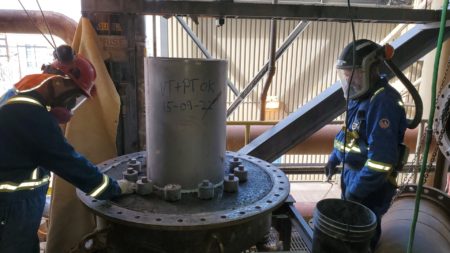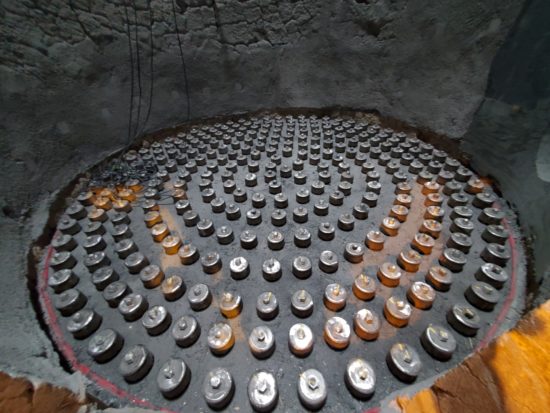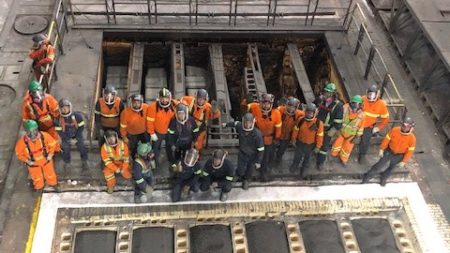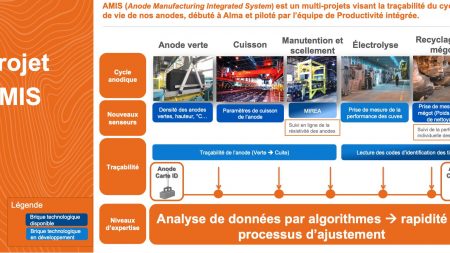Employees Show Ingenuity During Major Work at Calcination Centre

La conception de la tuyère sa conception originale en 2 sections a été revue, la faisant passer de 2 morceaux à un seul, ce qui élimine ainsi le risque de séparation par usure.
Major maintenance work was carried out during the shutdown of Calcination Centre unit #1 in September last year. About 100 people worked for 450 hours to replace the fluidised bed of the retention tank, an alumina transfer line, and the pre-cooler nozzle.
The fluidised bed of the retention tank was outdated and was beginning to have supply problems. So the staff looked at technology from a sister plant in Europe. However, this technology was about 15 years old, and its $1 million price tag was an obstacle.
Leveraging its ability to innovate, the shutdown team decided to design a hybrid fluidised bed instead.
“The hybrid bed is effective, and its design is much simpler,” says Dany Bonneau, Maintenance Engineer. “When we thought about it, we concluded that we could do things differently and use other materials to design something just as robust. We were inspired by the technology used at the sister plant and kept some of our parameters. We adapted what was being done elsewhere for much less money.”
Éric Tremblay, Mechanical Maintenance Technician, Calcination Centre, says: “We installed nozzles like the sister plant, but ours are made of SS310, and we covered them with alumina beads like our old bed. We removed unnecessary supports and redesigned the welding and prefabrication. This allowed us to reduce on-site installation time and cost, at a real cost of $220K.”
The alumina transfer line was originally planned to be completely replaced, but this would have required the use of a 600-tonne crane.
“The alumina transfer line is a big pipe, four storeys high,” says Bonneau. “It would have cost almost $0.5 million to remove it from the plant. After analysis, we decided to replace only the internal refractory, with overlapping sections, which reduced the cost considerably.”
Tremblay adds: “We removed sections of the floor to use our own overhead crane. We salvaged the existing steel pipe and replaced only the internal refractory with prefabricated sleeves supported by wall brackets. Ceramic fibre insulation was inserted between the wall and the sleeves to hold them in place. This reduced the project cost to $175K per unit.”
The pre-cooler nozzle caused a production loss of 3,102 tonnes in 2021. The problem was solved by redesigning the original two-piece nozzle into a single piece, which eliminated the risk of separation due to wear.
“Around 100 workers were involved in the project,” says Jean-Philippe Minier, Major Shutdown Planner. “We were able to work with the same contractors as for the last three years, which resulted in consistency on the sites and faster execution. By working as a team, we delivered this project on time and save a great deal of money.”

The shutdown team was inspired by what had been done at a sister plant in Europe to design a hybrid fluidised bed.


